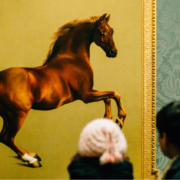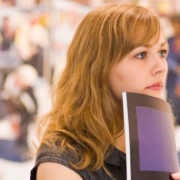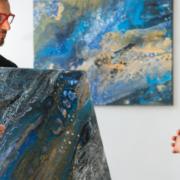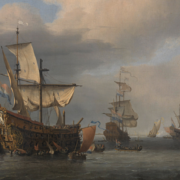Exploring Religious Themes in Art: A Guide for Potential Investors
Here at Victoria Fine Art, we often encounter clients who are particularly interested in the intersection of spirituality and art. Religious themes have been a cornerstone of artistic expression for centuries, offering both profound spiritual significance and substantial investment potential. Our latest blog article aims to educate and advise on investing in fine art with religious themes, highlighting prominent works and artists in this genre.
The Significance of Religious Themes in Art
Religious art serves as a visual narrative of spiritual stories, beliefs, and values. These artworks are about more than just aesthetic appeal, they offer much deeper connections to faith and history. Investing in such pieces of religious art not only diversifies a portfolio but also provides a tangible link to cultural and religious heritage.
In order to explain the significance of art and religion, it is interesting to note that one third of the paintings in London’s world-famous National Gallery’s collection of Western European art are of religious subjects. Also interestingly, nearly all of these are Christian. This prevalence of religious art reflects the fact that, following classical antiquity, Christianity became the predominant power that shaped European culture between the 13th and 19th centuries.
There were so many sources of inspiration; from biblical texts, commentaries, and apocryphal stories, all resulting in the creation of a wealth of objects of devotion. The images created by artists and represented in religious art often depicted visions or miracles performed by the saints, as well as other profound theological beliefs and debates and made to inspire and strengthen faith through public and private devotion.
Prominent Religious Themes in Christian Fine Art
The Renaissance era is renowned for its abundance of Christian art, with masters like Leonardo da Vinci, Michelangelo, and Raphael at the forefront of this time period. Leonardo’s “The Last Supper” and Michelangelo’s “The Creation of Adam” on the Sistine Chapel ceiling are classic examples which explore the themes of sacrifice, redemption, and divine creation.
Artists like Caravaggio and Rembrandt brought dramatic realism to religious scenes in the Baroque Period. Painted in 1600, Caravaggio’s “The Calling of St Matthew” is oil on canvas and measures approximately 323 by 343 centimetres. Caravaggio’s use of chiaroscuro in conveys a powerful spiritual awakening and portrays a pivotal moment in Christian narrative. The artwork is prominently displayed in the church of San Luigi dei Francesi, which is located in Rome, Italy.
Rembrandt followed the path of his master Pieter Lastman to build a broad repertoire of biblical subjects. In addition to his dramatic and groundbreaking early “Supper at Emmaus” of about 1629, with Christ shown entirely in silhouette, and his theatrical “Raising of Lazarus” of 1630, Rembrandt also painted a “Passion of Christ” series between 1633–39.
Artists to Watch
While historical pieces by masters like da Vinci or Michelangelo are often housed in museums and private collections, there are numerous contemporary artists whose work continues to resonate with religious themes, for example:
Makoto Fujimura: Known for his abstract expressionist approach, Fujimura integrates traditional Japanese techniques with Christian themes, creating visually stunning and spiritually profound pieces.
Anish Kapoor: This British-Indian sculptor incorporates Hindu and Buddhist themes into his abstract works, making them appealing to collectors interested in religious art.
Alison Watt: Her ethereal paintings often explore themes of spirituality and transcendence, drawing subtle influences from Christian iconography.
Investing in Religious Art
Investing in religious art offers a unique blend of spiritual enrichment and financial potential. Whether you are a seasoned collector or a novice investor, the key is to buy original art that resonates personally and holds historical or cultural significance. By focusing on authenticity, condition, and provenance, you can build a valuable collection that stands the test of time. As a fine art dealer, I am here to guide you through this rewarding journey, helping you find the perfect pieces that speak to both your faith and investment goals.
Here at Victoria Fine Art, we advise on every aspect of sourcing, buying, selling and maintaining fine art, aiming to help you make the right choice and provide the scholarly background to each painting. We also advise on framing, hanging, insurance and all other aspects of collecting.
If you have any further questions about buying and investing in religious fine art, Victoria Fine Art can help. If you’d like to set up an appointment, please don’t hesitate to get in touch. Feel free to complete this form, telephone +44 (0)1727 861669 or email info@victoria-fine-art.com for more information.











